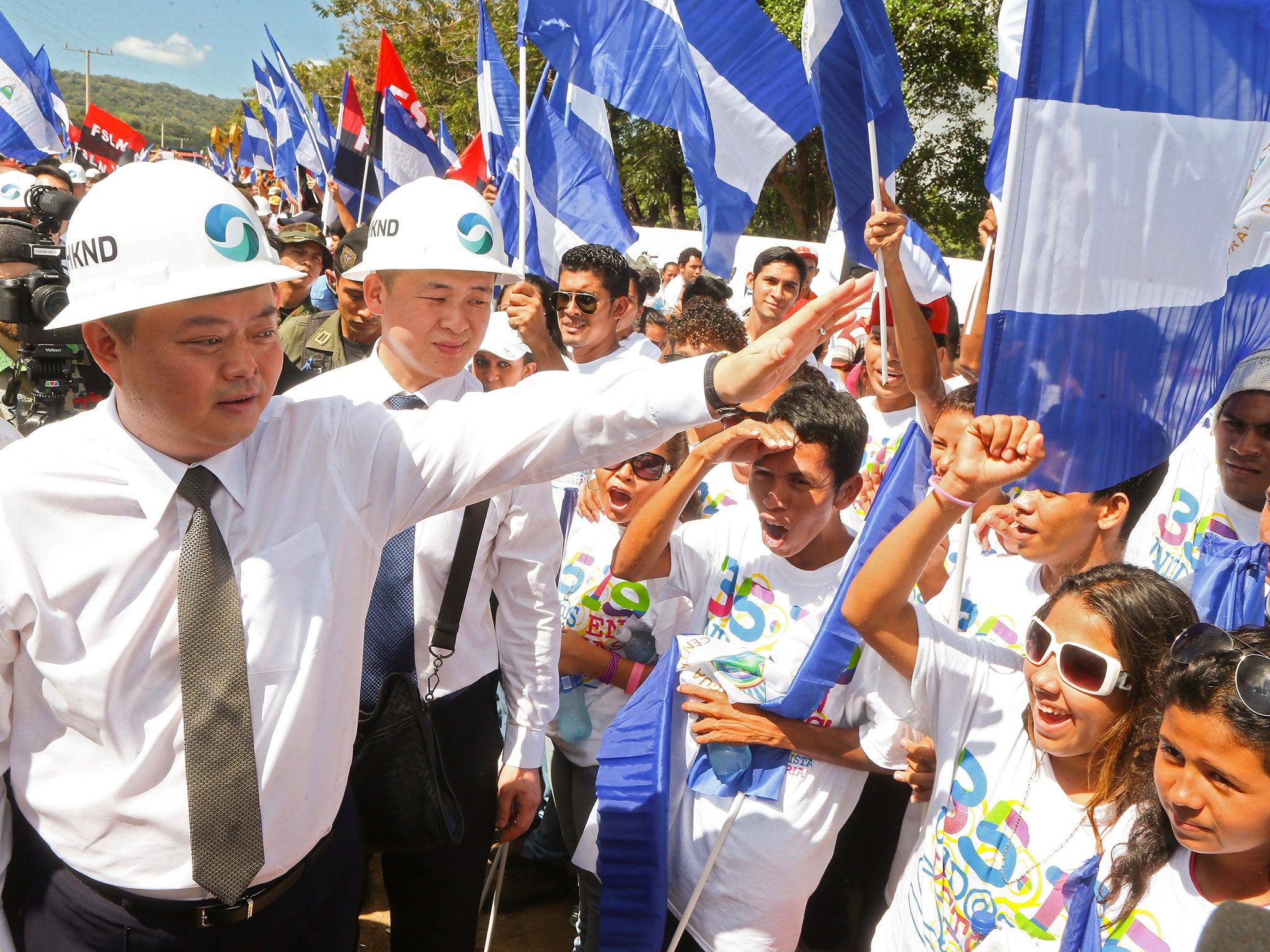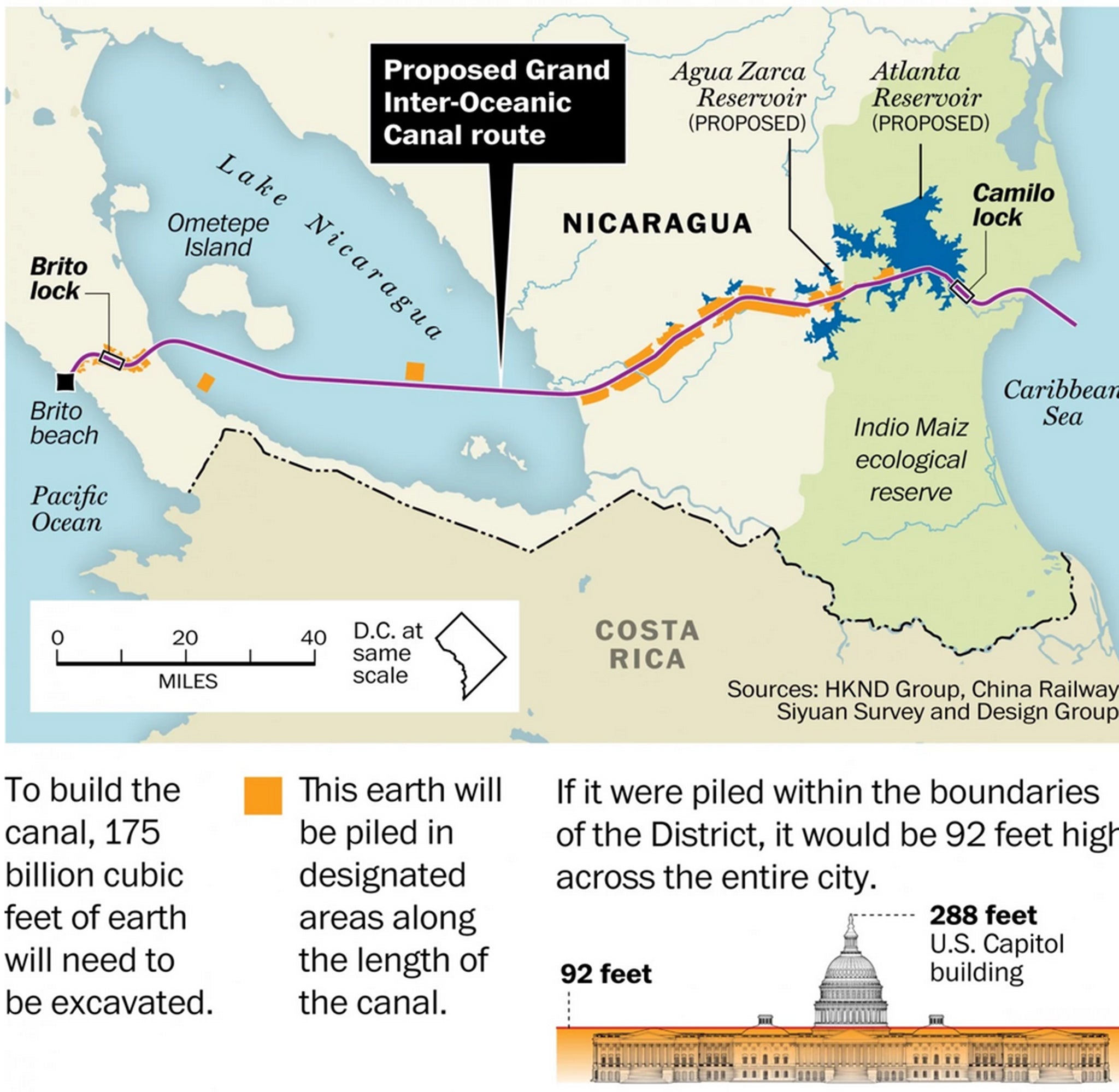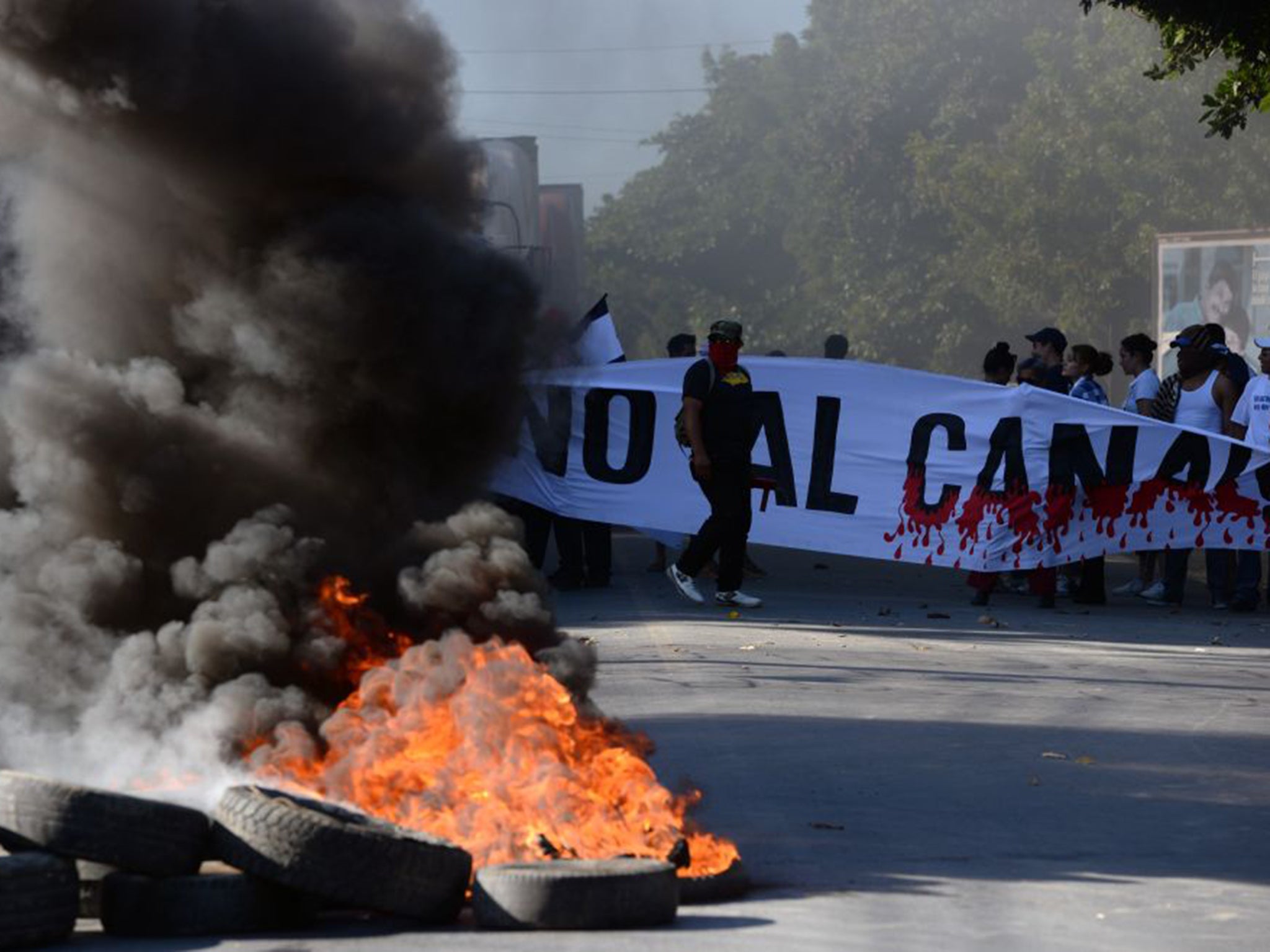Can Chinese billionaire Wang Jing overcome fierce opposition to build a canal across Nicaragua?
This 'enormous risk' has many people gearing up for the fight of their lives to stop it

One of the largest engineering projects in history would start here, on this desolate and pristine crescent of dark-sand Pacific beach.
From in front of the hammock-swinging shrimpers on the porches of their tin-and-wood shanties, the trench would run east in sinuous curves up through the mangroves and banana fields until it reaches the shores of Central America’s largest freshwater lake, then cut across the Caribbean highlands and through indigenous territory, ending its journey 172 miles away on the beaches of the Atlantic.
They call it the Grand Inter-Oceanic Canal: an audacious $50 billion plan by an obscure Chinese billionaire to cross Central America and challenge the Panama Canal for the world’s cargo traffic. And some in Nicaragua are gearing up for the fight of their lives to stop it.
“For a country as poor as Nicaragua,” said Roonell Carrillo, a cattle farmer who works along the proposed canal route, “this is an enormous risk.”
Last month, on a riser erected next to Carrillo’s farm, the son of President Daniel Ortega, the former Marxist guerrilla, stood alongside Wang Jing, a Chinese telecom magnate, to herald the official start of construction. In reality, little physical work is being done besides widening access roads, and major doubts remain about many aspects of the project, including whether Wang can afford to build it.
According to interviews with Chinese media, Wang was born in 1972 in Beijing, studied traditional Chinese medicine, and worked as a school principal. Then he joined a government-affiliated telecom company that went private in 2009. His firm grew rapidly into the largest privately owned science and technology company listed on the Chinese stock market and made him one of the country’s richest men.
President Ortega granted Wang’s canal company, HK Nicaragua Canal Development Investment Co. Ltd, or HKND Group, a 50-year concession, which would give Nicaragua only a small return — $10 million per year — for the first decade of operation, then increasing percentages of the profits in subsequent years. But even Wang’s Nicaraguan construction partners know little about his other investors or whether the Chinese government, which has denied involvement, is backing the project.
“It would be a relief for me to know that the Chinese government was behind this rather than just an entrepreneur,” said Benjamin Lanzas, head of Nicaragua’s construction industry group, who has met Wang and whose company has contracts for parts of the project. “For one investor, that’s a lot of money.”
Nicaraguan government officials say the canal could revolutionize the economy of the second-poorest country in the Americas. The scope of the project is epic: The canal would be three times longer than Panama’s and accommodate larger ships capable of carrying up to 25,000 containers. Construction executives say that to build it would require twice as much cement per year as is currently manufactured in all of Central America.

The plan, according to company presentations and reports, includes building new roads, bridges, power plants and an airport. Plus two new ports, one for each ocean, lighthouses and locks, worker camps and tourist resorts, ferry terminals and a free trade zone. HKND has estimated that its canal could eventually serve 5 percent of the world’s shipping traffic, and Nicaraguan officials say it will double the size of the country’s economy. The company estimates it will take five years to finish, but even its supporters consider that overly optimistic.
But as the project ramps up, fresh opposition is rising to meet it. Residents along the route have organized protests and marches. Dozens of people have been arrested, some of them allegedly beaten by police.
Among the concerns are environmental questions: Opponents say the dredging and earth-moving will pollute wetlands and rivers and foul Lake Nicaragua, an important source of drinking water and irrigation. The amount of earth to be moved could fill 2 million Olympic-sized swimming pools. Among the more sensitive parts of the route, apart from the lake, are the Indio Maiz ecological reserve in the southeastern part of the country, and the mangroves and marine reserves near the Brito beach, said David Blaha, a partner with the U.K.-based firm, Environmental Resources Management, which has been hired by HKND to consult on the project. ERM’s environmental impact assessment has not yet been completed.
“Obviously you can’t build a project of this magnitude, in a location like this, without there being significant impacts,” Blaha said. “The question is: Can those impacts be mitigated? And do the benefits of the project outweigh the impacts?”
Supporters of the project argue that rural poverty has already led to deforestation and the economy needs to move away from its subsistence on commodities.

“I think the country’s poverty is a bigger problem than the environmental concerns,” said Arturo Cruz, a former Nicaraguan ambassador to Washington and a professor at the INCAE business school outside Managua. “If we don’t achieve a more prosperous country in the next five to 10 years — with or without the canal — we will see severe damage to the environment.”
Lanzas, who has flown, walked or driven the bulk of the canal route, said the longer eastern portion is sparsely populated. On his office computer, he flipped through aerial pictures of empty rolling hills. “Nothing. Nothing. Nothing,” he said. But asked about the western sliver of land between the Pacific and the lake, he said: “That’s a different story.
“In the Pacific, it’s a lot more complicated.”
Thousands of jobs created
Rafael Bermudez opened his jean jacket to reveal his holstered pistol.
“We don’t want the canal,” he said. “And we don’t want this president.”
Bermudez, a farmer and former guerrilla who fought alongside Daniel Ortega against the Somoza dictatorship in the ’70s, now accuses his onetime comrade of betraying his country to the Chinese.
“He sold us out like animals,” he said.
HKND estimates that the canal would create 50,000 jobs, but thousands of them would go to imported Chinese workers, and construction would also displace tens of thousands of people. Bermudez says he will be forced off his banana farm.
“We’re campesinos. We don’t have anything to do with any canal. We’re farmers. The people in the capital eat from the work of our hands,” he said. “I don’t want to sell. This is what I live from. I want this land for my kids.”
One of Bermudez’s fellow opponents, Octavio Ortega, the president of the Foundation for the Development of the Municipalities of Rivas, a town close to the canal route on the Pacific portion, has been organizing marches against the canal. He said police beat him in the face with a rifle butt during one protest last month and broke his left arm. He was jailed for eight days, he said, and kept in a cell where food was passed through a slit twice a day.
“We are being repressed savagely,” he said.
Recent polls have indicated that a majority of Nicaraguans support the canal, even those living close to the route, but by some measurements that support is dropping. Some of the opponents argue that the canal will compromise the country’s sovereignty.
“The government is allowing foreigners to get all the land without any obligation to the government or the people,” said Roger Guido Narbaez, a farmer from the Rivas area. “They have total impunity.”
Guido and others said that if the Nicaraguan government persists with the project, it could generate violence, a grim possibility for a country whose years of bloody civil war is not far past.
“If this government isn’t capable of understanding the disaster that this is going to be for this country,” he said, then violence “is going to be the only solution.”
‘We just want answers’
The parade of cameramen, census takers, Chinese engineers and environmentalists has been enough to convince the fishermen who live along the Brito beach that something is changing in their tiny village — reachable after miles on a rutted dirt track — but they’re still not sure what.
“Whatever it is, we can’t do anything to stop it,” said Fiel Nogera, a 60-year-old fisherman. “We just want answers.”
The only other people in Brito are a small contingent from the Nicaraguan Navy who watch for passing boats loaded with Colombian cocaine. Third Sgt. Pedro Baptes, 28, surveying the empty beach and the silent inlet, thought he knew what was in store.
“All this will be underwater,” he said.
* Copyright Washington Post: Simon Denyer in Beijing contributed to this report.
Join our commenting forum
Join thought-provoking conversations, follow other Independent readers and see their replies
Comments